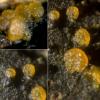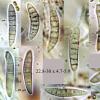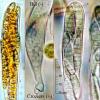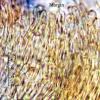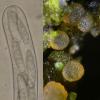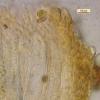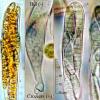
17-09-2025 10:50
Heather MerryleesHi there!I am hoping for any advice on the identif

27-11-2025 11:46
Thomas Læssøehttps://svampe.databasen.org/observations/10493918

29-11-2025 08:40
 Andreas Millinger
Andreas Millinger
Hello,on a splintered part of a branch on the grou

28-11-2025 16:45
Nogueira HéctorNovember 23, 2025 Requejo de Sanabria (León) SPAI

25-11-2025 14:24
Thomas Læssøehttps://svampe.databasen.org/observations/10490522

27-11-2025 15:41
Thomas LæssøeSpores brownish, typically 4-celled; 26.8 x 2.4;

27-11-2025 12:01
Thomas Læssøehttps://svampe.databasen.org/observations/10496727

27-11-2025 11:31
Thomas LæssøeCollectors notes: Immersed ascomata, erumpent thro

23-09-2025 13:31
Thomas Læssøehttps://svampe.databasen.org/observations/10534623

26-11-2025 18:13
The entire run of Mycotaxon is now available throu
Asco inconnu
Enrique Rubio,
08-04-2009 20:46
Il me montre des asques IKI (-), avec crochets, et les spores sont septées (jusqu'a 7 septa) et germinent a l'interieur des asques. Paraphyses avec carotenoides.
Je ne connais pas le genre
Merci en avancé
Enrique
I'd like to know your opinion about this small asco (0.2-0.3 mm) that grows on Corylus branches, on the wood and on pyrenomycetes (Diatrype) surface. The asci are IKI (-), and they have croziers. The spores are multiseptate (up to 7 cross septa) and germinating inside the living asci. Paraphyses branched with carotenoids. I don't know even the genus to wich belongs.
Many thanks for your help
Enrique
Hans-Otto Baral,
08-04-2009 21:47

Re:Asco inconnu
Dear Enrique
I know this fungus very well. It is on the DVD under the name Naeviopsis cf., HB 5472a.JPG, but presently I have it in the directory Calloria as unidentified species with 7 septa. I know only a few collections from (sub)mediterranean Spain, but 2 years ago I detected it in my village on a cane of Rubus fruticosus, 1m above ground, on bast, meal of bark beetle & wood. Ap. rehydr. light amber-yellow, greenish translucent. Asci *113-130 x 14.5-15,5 µm. Sp. *23-25.5 x 5.3-7 µm, 7-septate within turgescent asci already (there masked by the minute LBs, probably also 3-septate). From this are the attached photos.
I know this fungus very well. It is on the DVD under the name Naeviopsis cf., HB 5472a.JPG, but presently I have it in the directory Calloria as unidentified species with 7 septa. I know only a few collections from (sub)mediterranean Spain, but 2 years ago I detected it in my village on a cane of Rubus fruticosus, 1m above ground, on bast, meal of bark beetle & wood. Ap. rehydr. light amber-yellow, greenish translucent. Asci *113-130 x 14.5-15,5 µm. Sp. *23-25.5 x 5.3-7 µm, 7-septate within turgescent asci already (there masked by the minute LBs, probably also 3-septate). From this are the attached photos.
Hans-Otto Baral,
08-04-2009 21:53

Re:Asco inconnu
So you see I am not sure with the genus and I never saw something comparable in the literature. There exist similar collections with 3-septate spores from Spain (HB 5516, see DVD), and one with spores similar as yours but only 3-septate. The latter I found in abundance in my village on a cultivated, free-standing living apple tree, on the detaching bark of the main stem in 1 m above ground (where also Hysteropatella prostii grows). I am not at all sure if there exist several specie or one very variable species. But I never saw the spores to germinate within the living asci. Do you have a photo?
Zotto
Zotto
Enrique Rubio,
08-04-2009 22:10
Hans-Otto Baral,
08-04-2009 22:14

Re:Asco inconnu
O.k., but this is a dead ascus. Compare my living ascus near the apothecia.
Zotto
Zotto
Enrique Rubio,
08-04-2009 22:33
Re:Asco inconnu
How you can know if the ascus is alive or dead? It is for the turgescence of the ascus?
Hans-Otto Baral,
08-04-2009 23:06

Re:Asco inconnu
of course, yes. Fresh fungi often contain some dead cells and dry fungi may be fully alive, so you must decide for every single cell if it still lives. Dead asci do not change their size when you add KOH or other lethal media, but living asci shrink enormously. Have a look at the main page of my website.
http://www.gbif-mycology.de/HostedSites/Baral/
Zotto
http://www.gbif-mycology.de/HostedSites/Baral/
Zotto
